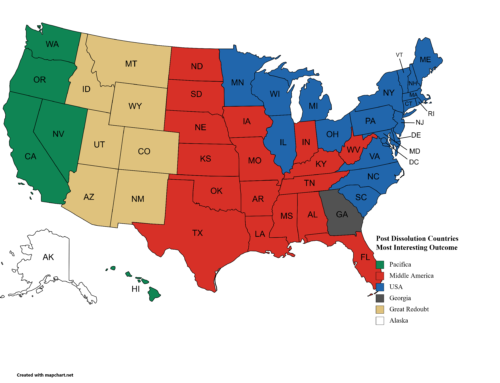We’re now a couple of weeks into the Pandemic that is the Coronavirus or Covid-19. It is time for a progress report on where we are and what are our prospects for recovery.
First and foremost, we need to remember, reiterate and remind one another that this pandemic is real and not a hoax. It is a real and rapidly spreading disease that is markedly different from the seasonal flu. It cannot be compared to traffic fatalities and waved away because infections and deaths from this virus are not spread out across a country over the period of a year. Lets look at some of these issues and see how they are likely to play out.
While we average about 30,000 deaths to the flu every year, those flu deaths do not concentrate at one short period of time and they don’t affect others like this virus does. Lets look at some simple, but very important statistics (facts, data, numbers) offered from an excellent short article in Vox. In an average flu, each infected person can expect to infect 1.3 others. With Coronavirus that number is 2.5 infections per person. That may be much higher in densely crowded areas. That is because with the flu, the incubation period is 1-4 days. Coronavirus incubates anywhere from 3 days to 14 with some cases that have been confirmed at 27 and even 37 days. For every day of incubation prior to symptoms, infected people can pass the virus to others without any realization. With the flu, 2% of the infected population is hospitalized. With Coronavirus it is close to 20% with a fatality rate of up to 3.4%. These numbers alone, these real numbers show, us that it is Coronavirus is not the flu, or anything like it. So lets look at what those numbers mean when applied to where we live.
ProPublica has published an excellent analysis showing maps of the country by hospital region and how different rates of infection over different periods of time will affect hospital saturation by region. The absolutely best case scenario would have only 20% of the country infected spread out over 18 months. In that scenario, most of the country would fill its hospital beds and the largest cities would be stressed to over 100% capacity. That means the best case in this country is to slowly spread out the infection rate to 18 months or longer. Under that best case, 50 million people would become infected, which is almost twice as many people as get the flu every year. And even in that best case, our most crowded cities would see hospitals beyond capacity for that entire period. That is why epidemiologists, economists and medical professionals are begging for even more social distancing, even more stringent quarantines and aggressive testing.
But achieving that best case scenario requires at least an 18 month period of social distancing and quarantines of infected people to keep the infection rate to “merely” greater than 100% capacity of hospitals. And that social distancing is already significantly affected the national and global economy. The government is voting today on a $2 Trillion (our brains cannot fathom how big that number is) emergency relief law to shore up the economy. But the longer the period of social distancing, and the more people put out of work, the less taxes the Federal and State governments will be collecting from the very people that are being told to stay home.
So why go through that? Shouldn’t we just allow it to run its course as fast as possible and get it over with so that we can get back to revitalizing the economy? Lets look at the numbers and the implications of that course of action.
If all the states and municipalities go along with the President’s desire to open the country for business by Easter, we would see a near term best case, mid case and worst case (which isn’t even the really worst…). If only 20% were infected over 6 months rather than 18 months, no hospital in the country would be below 100% capacity with the metro areas stressed beyond 200% capacity. If the infection rate goes to 60% over 6 months, nearly every hospital in the country would be stressed to well over 200% of capability to treat the sick.
At this point, some people will make their own moral decision for everyone else in the country and decide that that kind of death rate would be acceptable to them. I’ve heard of people saying that it would be old people who would already die soon anyway and that it would be worth it for the economy to come back quickly. So even if there are some who would say their parents’ and perhaps family members’ deaths would be worth jump-starting the economy, lets unpack some of the assumptions that our economy could bounce back after a quick acceptance of whoever will die.
First is the idea that we can open the economy and quickly get over the infection rate. When you look at the exploding rate of infection in New York and other dense cities, you’re looking at the beginning of the wave of infections, the first people to have caught the virus. What we know is that these people went around for up to 2 weeks or longer interacting with people, who themselves did the same. That means the spike we’re seeing now will grow tremendously over the next few weeks. Today’s Washington Post has an article on the debate between slowing the rate over a long period of time vice getting everyone back to work and letting the virus take its natural path. “By the time someone arrives at the hospital and is severely ill, you can assume they were infected two to three weeks ago,” said Natalie Dean, a biostatistician at the University of Florida. “As bad as things already seem in New York, for example, if you look at the rising numbers, there’s much worse coming,” said Dean, who is working on Coronavirus vaccine evaluations with the World Health Organization. “So to be talking about backing off now feels premature and dangerous. Because of the time lag, the risk of under-reacting early on versus overreacting is not proportional.”
We also need to recognize that it is not just the elderly that are in danger. Yesterday a 37 yer old otherwise healthy teacher in NYC died. As did an otherwise healthy teenager whose identity has not yet been released. Doctors and nurses are also getting sick. We cannot pretend that only elderly people will die. When hospitals reach the point that they’re treating little besides the virus, the medical specialists will by simple math be the most likely to become infected. As that happens, the very least we can expect is that the mortality rate among that population will be at least what it is in the rest of the population. That will mean some large numbers of medical professionals will die. Now think of the long-term implications of a decrease in the number of doctors and nurses in a medical system already stressed with too few of each. If we lose as few as 10% or many as a quarter of our doctors, the system of caring for patients and training new doctors will take years to recover.
And that is only looking at doctors. As we make a decision to stay home and order from Amazon, we need to remember that people in fulfillment centers and warehouses will be just as susceptible as anyone to catch Coronavirus. Same with people on assembly lines or in grocery stores and pharmacies.
But the sociological reality of this pandemic is that even without the President asking people to go back to work, people will tend to break the quarantines the longer the pandemic goes on. On an individual level, people cannot always keep in mind how their individual actions can lead to societal disruption. Those individual actions are difficult to directly draw causal relationships to outcomes. But on a mass level, large numbers of people going shopping every day in grocery stores that remain open, postal workers handling mail and mailboxes, hungry people going to food banks to accept aid from neighbors, all these will continue to spread the virus. Short of a complete shutdown, there cannot be a long-term lessening of the rate of infection.
And our just-in-time economy has exacerbated shortages of critical equipment like masks and ventilators. Worse still, the structure of the economy has forced states and hospitals to fight against each other for what is available. In today’s economy, hospital administrators are fired if they pay for a large inventory of masks and ventilators and face shields for a pandemic that may not come. Those hospital administrators and state health managers will be fired for buying more expensive equipment from the few American suppliers when less expensive alternatives are available from China or other countries. So when those very factories are shut down due to their own pandemic response, it isn’t possible to buy from them. And when they do come back on line, they aren’t able to open their spigots to a higher flow. There’s only so much they can produce. That will mean doctors and nurses will have to make difficult decisions about reusing equipment. People WILL become infected that could have otherwise have been protected.
From another article in today’s Post: “There will be no normally functioning economy if our hospitals are overwhelmed and thousands of Americans of all ages, including our doctors and nurses, lay dying because we have failed to do what’s necessary to stop the virus,” Rep. Liz Cheney (R-Wyo.) wrote on Twitter. Scott Gottlieb, the Trump administration’s Food and Drug Administration commissioner from 2017 to 2019, said it would be impossible to return to a stable economy amid a deepening epidemic. “So long as covid-19 spreads uncontrolled, older people will die in historic numbers, middle-aged folks doomed to prolonged ICU stays to fight for their lives, hospitals will be overwhelmed, and most Americans terrified to leave homes, eat out, take the subway, or go to the park,” he wrote in a Twitter thread late Monday.
As much as I’d like to see us all help each other through this as long as it takes, that is a wish that is not reasonable. It is entirely reasonable to expect us to all help each other. We will certainly help one another without society falling into chaos. To break a pandemic, we don’t need 100% of the people to stay out of contact with others. We do, however, need a large percentage to do so. But as the duration of the pandemic extends and we successfully keep the peak of infections below hospital capacity, people will tire.
I don’t see the best case being likely. There’s a difference between possible and likely, between foreseen and foreseeable. I think we will live through a very steep peak of infections in the coming weeks. I see our medical system overwhelmed and people dying at home because there isn’t room for them to die in a hospital. I see a recovery. But I see years of recovery in which the country changes perhaps in ways we aren’t considering now.
We’ll save that for next time. Until then, keep thinking…






Leave A Comment